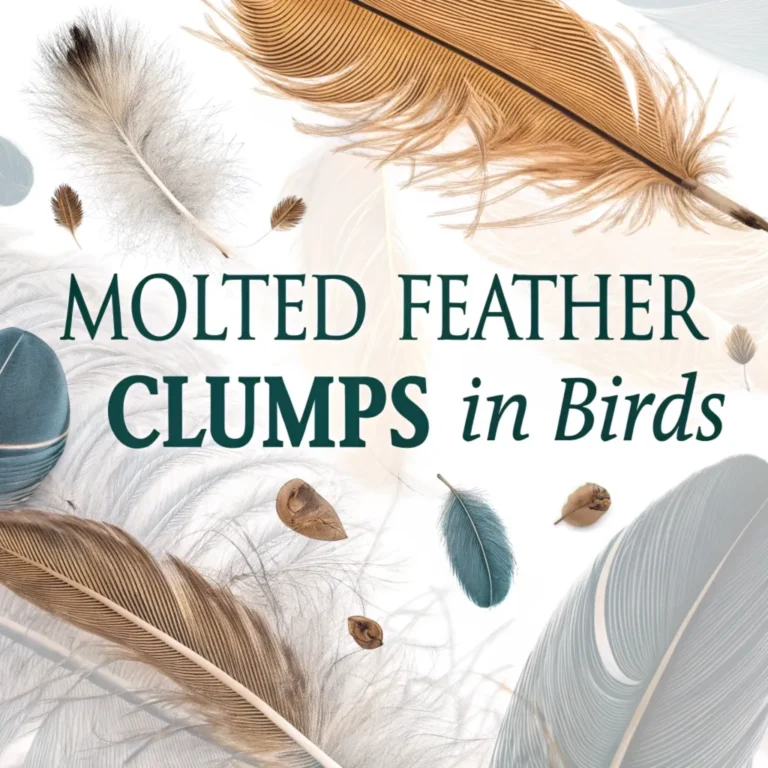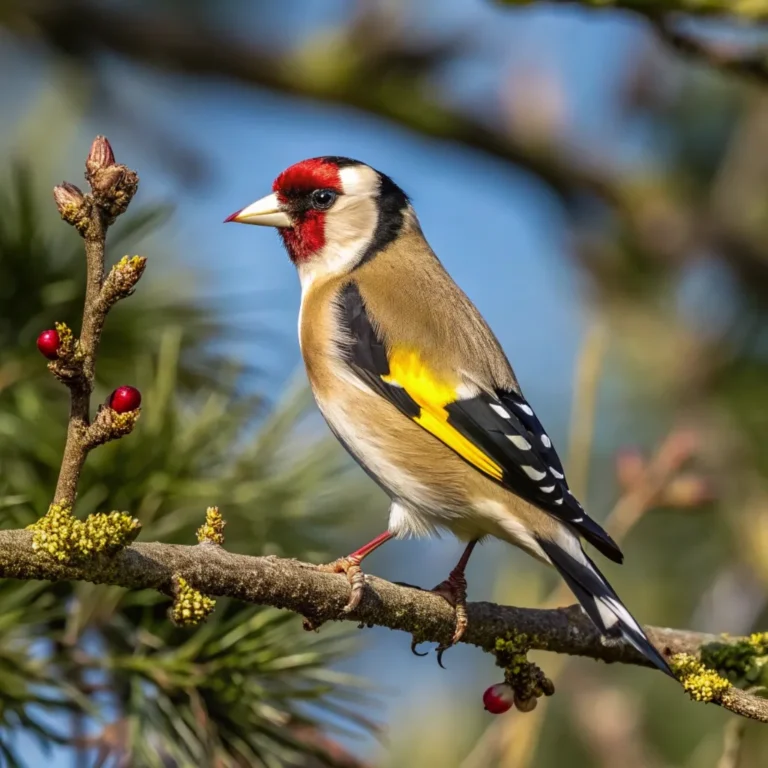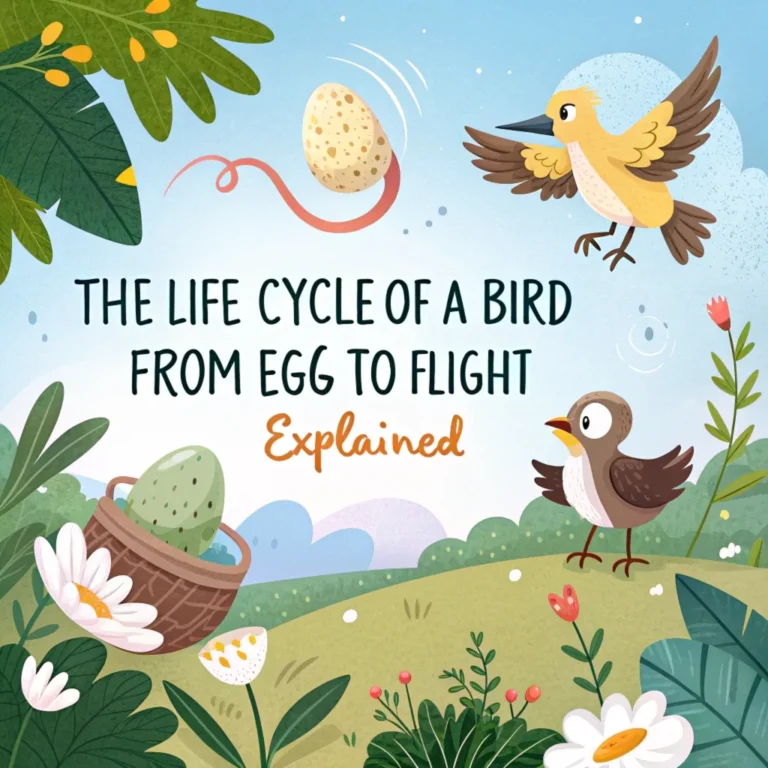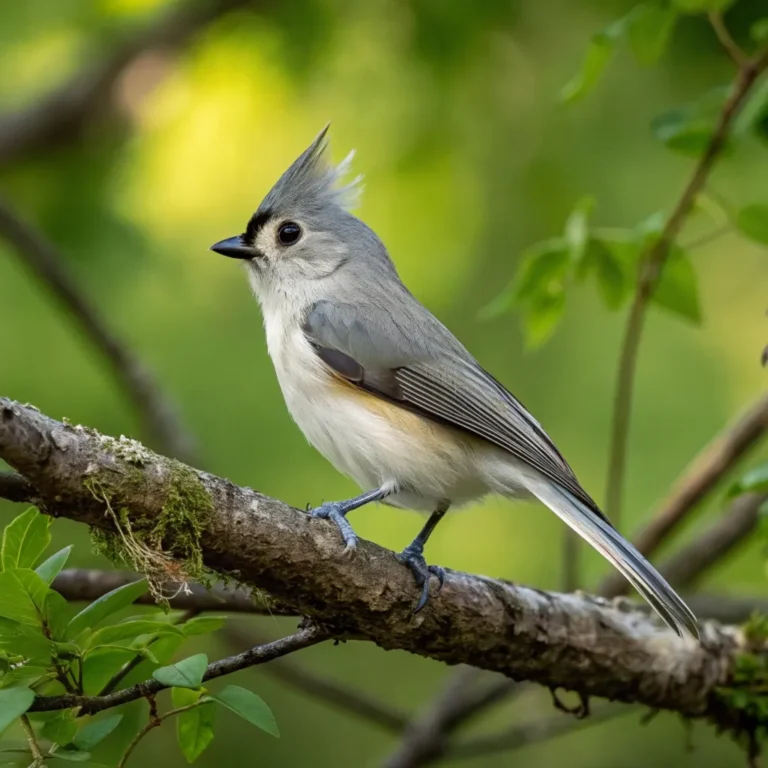Female Eastern Bluebird: A Comprehensive Guide to Characteristics and Behavior
The female Eastern Bluebird, a captivating songbird, plays a vital role in North American ecosystems. This guide explores the unique features and behaviors of female Eastern Bluebirds.
We will examine their appearance, nesting habits, and contributions to their species’ survival. By understanding these birds, we can appreciate their importance and support conservation efforts.
This comprehensive overview provides insights into the life of female Eastern Bluebirds, from their physical traits to their parenting skills.

Key Takeaways: Female Eastern Bluebird Essentials
- Appearance: Female Eastern Bluebirds have a bluish-gray back and head, with blue wings and tail
- Coloration: Their plumage is less vibrant than males, with a warm brown throat and breast
- Size: Females are slightly heavier than males but similar in overall size
- Nesting: They build nests in cavities, using grass and other soft materials
- Egg-laying: Females lay 3 to 7 light-blue eggs per clutch
- Incubation: The female incubates the eggs for 13 to 16 days
- Parental care: Both parents feed the chicks, but females do most of the brooding
- Breeding season: Females typically raise two broods each season
- Lifespan: Eastern Bluebirds can live up to 6 to 10 years in the wild
- Diet: They feed on insects, berries, and small vertebrates
- Behavior: Females are monogamous and may receive help from previous offspring
- Conservation: Providing nest boxes can support Eastern Bluebird populations
The female Eastern Bluebird plays a crucial role in the survival and propagation of the species. Their unique adaptations and behaviors contribute to the overall success of the population.
These birds have evolved to thrive in various habitats, from open woodlands to suburban areas, demonstrating their resilience and adaptability.
Understanding the specific characteristics of female Eastern Bluebirds helps us appreciate their importance in maintaining ecological balance and biodiversity.
Conservation efforts focused on Eastern Bluebirds have been largely successful, thanks to a better understanding of their needs and behaviors.
The provision of nest boxes has been particularly effective in areas where natural nesting sites are scarce.
This human intervention has allowed bluebird populations to recover and thrive in many regions.
By continuing to study and protect these beautiful birds, we can ensure that future generations will have the opportunity to observe and appreciate the grace and charm of female Eastern Bluebirds in their natural habitats.
Physical Characteristics of Female Eastern Bluebirds
Female Eastern Bluebirds possess a distinct appearance that sets them apart from their male counterparts.
Their plumage features a bluish-gray coloration on the back and head, complemented by blue feathers in the wings and tail.
This subtle blue tinge gives female bluebirds an elegant look, despite being less vibrant than males.
The throat, sides of the neck, and breast of female Eastern Bluebirds display a rich brown color. Their belly is predominantly whitish, creating a contrast with the upper body.
This color pattern helps distinguish females from males, which have a more intense blue and orange plumage.
The coloration of female Eastern Bluebirds serves several important purposes in their survival and reproductive success.
The muted tones provide excellent camouflage when nesting, helping to protect them from predators. This adaptation is crucial during the vulnerable periods of incubation and caring for young chicks.
Additionally, the subtle differences in plumage between males and females play a role in mate selection and species recognition, ensuring that Eastern Bluebirds can identify suitable partners for breeding.
While the female’s plumage may seem less striking than the male’s, it is no less beautiful or functional.
The combination of bluish-gray, brown, and white creates a harmonious appearance that allows female Eastern Bluebirds to blend seamlessly into their environment.
This coloration also reflects the species’ evolutionary history and the specific pressures that have shaped their appearance over time.
The female Eastern Bluebird’s plumage is a testament to nature’s ability to balance aesthetics with practicality.
Size and Weight Comparison

Female Eastern Bluebirds are similar in size to males, measuring about 7 inches (17 cm) in length. However, females tend to be slightly heavier than males, although this difference is often not noticeable in the field.
The subtle size difference between male and female Eastern Bluebirds is an example of sexual dimorphism, a common phenomenon in many bird species.
This slight variation in weight may be related to the female’s role in egg production and incubation, which requires additional energy reserves.
Despite these minor differences, both sexes are well-adapted to their ecological niche, with a size that allows for efficient flight and foraging in their preferred habitats.
Understanding the size and weight characteristics of female Eastern Bluebirds is important for researchers and conservationists.
This knowledge helps in monitoring population health, as changes in average size or weight can indicate environmental stressors or shifts in food availability.
Additionally, these measurements are crucial for designing appropriate nest boxes and other conservation tools that cater to the specific needs of female Eastern Bluebirds, ensuring their comfort and success during the breeding season.
Nesting Behavior of Female Eastern Bluebirds
Female Eastern Bluebirds play a crucial role in the nesting process. They are responsible for building the nest, which takes about 10 days to complete.
The nests are cup-shaped and lined with soft grass, providing a comfortable environment for the eggs and chicks.
Nest Location and Construction
Eastern Bluebirds prefer to nest in abandoned woodpecker holes or other cavities that offer protection.
These nests are typically located several feet above the ground. In areas where natural cavities are scarce, they readily accept artificial nest boxes, making them popular among birdwatchers and conservationists.
The nest-building behavior of female Eastern Bluebirds is a fascinating display of instinct and skill. The process begins with the female selecting an appropriate site, which must meet specific criteria for safety and suitability.
Once a location is chosen, she meticulously gathers materials such as grass, pine needles, and fine twigs.
The female carefully weaves these materials together, creating a sturdy yet soft structure that will cradle her eggs and chicks.
The quality of the nest directly impacts the success of the brood. A well-constructed nest provides insulation against temperature fluctuations and protection from predators.
Female Eastern Bluebirds often reuse successful nest sites in subsequent breeding seasons, demonstrating their ability to learn from experience.
This behavior highlights the importance of maintaining suitable nesting habitats and the potential for long-term conservation efforts to have a significant impact on bluebird populations.
Egg-Laying and Incubation
Once the nest is ready, the female lays 3 to 7 light-blue eggs, with an average of 4 or 5 per clutch. The female then takes on the responsibility of incubating the eggs for a period of 13 to 16 days.
During this time, she relies on her mate to bring her food, ensuring she can maintain constant incubation.
The egg-laying process is a critical phase in the reproductive cycle of female Eastern Bluebirds.
Each egg requires a significant investment of energy and resources, and the timing of laying is carefully synchronized with environmental conditions to ensure the best chances of survival for the offspring.
The distinctive light-blue color of the eggs is not just aesthetically pleasing but serves a purpose in camouflage and UV protection.
During incubation, the female Eastern Bluebird demonstrates remarkable dedication. She maintains a near-constant temperature for the eggs, turning them regularly to ensure even development.
This period is physically demanding for the female, as she must balance the need to incubate with her own nutritional requirements.
The support of her mate during this time is crucial, highlighting the importance of pair bonding in Eastern Bluebird breeding success.
Parental Care and Chick Development

After the eggs hatch, both parents contribute to raising the young. The female broods the chicks for up to 7 days after hatching to keep them warm.
Both parents feed the chicks while they are in the nest and continue to do so for about three weeks after they have fledged.
The chicks are altricial when they hatch, meaning they are helpless and require extensive parental care. They are fed primarily insects by both parents, which provides the protein necessary for their rapid growth and development.
The parental care exhibited by female Eastern Bluebirds is a testament to their dedication and instinctual behaviors. In the early days after hatching, the female spends most of her time brooding the chicks, using her body heat to regulate their temperature.
This constant attention is crucial for the survival of the young, as they are born without feathers and unable to thermoregulate on their own.
The female’s role in this period is physically demanding but essential for the chicks’ development.
As the chicks grow, both parents engage in intensive feeding schedules. The female, along with her mate, makes numerous trips to the nest each day, bringing a variety of insects to meet the growing nutritional needs of their offspring.
This period of rapid growth is marked by significant changes in the chicks, from the development of feathers to the strengthening of muscles needed for flight.
The attentive care provided by the female Eastern Bluebird during this time significantly influences the long-term success and survival of her offspring.
Breeding Season and Multiple Broods

Female Eastern Bluebirds typically raise two broods each breeding season, which occurs in spring and summer. This ability to produce multiple clutches in a single season contributes to the species’ reproductive success and population stability.
The breeding season of Eastern Bluebirds is a time of intense activity and energy expenditure for females.
The ability to raise multiple broods in a single season is a remarkable adaptation that allows the species to maximize its reproductive output.
This strategy is particularly beneficial in environments where resources are abundant but the breeding window is relatively short.
Female Eastern Bluebirds must carefully balance their energy reserves to support this demanding reproductive schedule.
The success of multiple broods depends on various factors, including food availability, weather conditions, and the health of the parents.
Female Eastern Bluebirds often begin preparing for a second brood while still caring for fledglings from the first.
This overlap requires exceptional time management and resource allocation. The ability to raise multiple broods also provides a buffer against potential losses, increasing the chances that at least some offspring will survive to adulthood and contribute to the next generation.
Unique Behaviors of Female Eastern Bluebirds
Monogamy and Mating System
Eastern Bluebirds are generally monogamous, with one male mating with one female. However, there are occasional instances where a male may mate with two females.
This mating system ensures that both parents invest in raising the offspring, increasing the chances of survival for the young.
The monogamous behavior of female Eastern Bluebirds plays a crucial role in the species’ social structure and reproductive success. This mating system fosters strong pair bonds that often last for multiple breeding seasons.
The stability of these partnerships allows for more efficient division of labor in nest building, incubation, and chick-rearing.
Female Eastern Bluebirds benefit from this arrangement through increased paternal investment in offspring care, which can significantly improve the survival rates of their young.
While monogamy is the norm, female Eastern Bluebirds may occasionally engage in extra-pair copulations. This behavior can introduce genetic diversity into their offspring, potentially increasing their fitness.
However, such occurrences are relatively rare, highlighting the overall strength of the monogamous bond.
The female’s choice of mate is influenced by factors such as the male’s plumage quality, territory size, and ability to provide resources, all of which can indicate his potential as a supportive partner and father.
Helper Behavior
In some cases, young bluebirds from one brood will stay near the nest to help their parents raise a second brood.
While this behavior is not very common among Eastern Bluebirds, it demonstrates the species’ capacity for cooperative breeding and family bonds.
The helper behavior observed in some Eastern Bluebird families is a fascinating example of cooperative breeding.
This phenomenon, where offspring assist their parents in raising subsequent broods, is relatively uncommon in the species but provides valuable insights into their social dynamics.
Female Eastern Bluebirds may benefit significantly from this assistance, as it allows for more efficient care of the younger brood and potentially increases overall reproductive success.
Helpers, which are typically young from a previous brood, contribute by assisting with feeding and sometimes even defending the territory.
This behavior not only aids the parents but also provides the helpers with valuable experience that may improve their own future breeding success.
For female Eastern Bluebirds, the presence of helpers can reduce the physical demands of raising a brood, potentially allowing for better body condition and increased chances of survival.
This cooperative system showcases the adaptability of Eastern Bluebird social structures in response to environmental conditions and family dynamics.
Feeding Habits and Diet
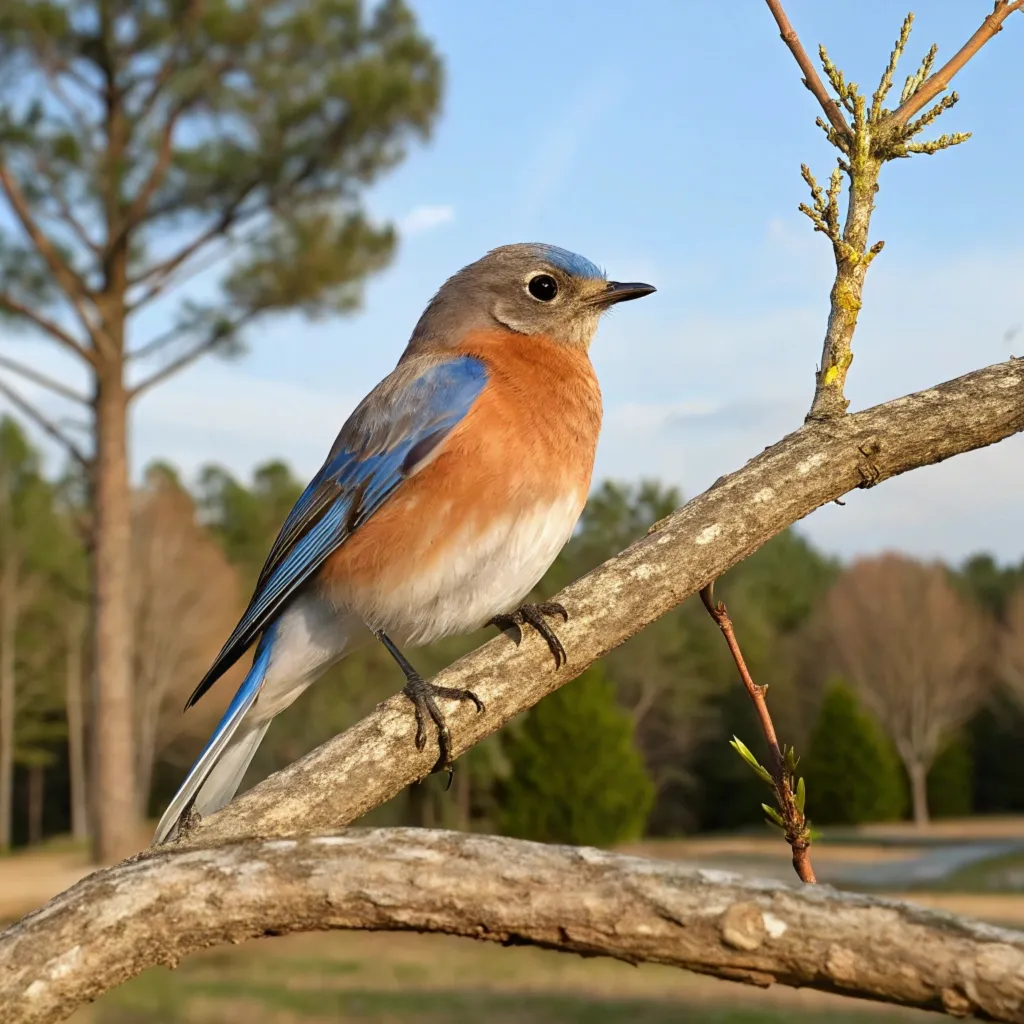
Female Eastern Bluebirds, like their male counterparts, have a diverse diet that includes both insects and plant matter.
They primarily feed on a variety of insects, including crickets, grasshoppers, and beetles. During winter months, when insects are scarce, they rely more heavily on berries and wild fruit.
The dietary flexibility of female Eastern Bluebirds is a key factor in their ability to thrive across various habitats and seasons. Their preference for insects during the breeding season is particularly important, as this protein-rich diet supports egg production and chick growth.
Female bluebirds are adept at locating and capturing a wide range of insect prey, demonstrating remarkable adaptability in their foraging strategies.
During the colder months, when insect availability decreases, female Eastern Bluebirds shift their diet to include more plant-based foods.
This ability to switch between food sources allows them to maintain adequate nutrition throughout the year.
The consumption of berries and fruits not only provides essential nutrients but also plays a role in seed dispersal, highlighting the ecological importance of these birds beyond their role as insect predators.
This dietary adaptability is crucial for the survival of female Eastern Bluebirds and contributes to their success as a species.
Foraging Techniques
Eastern Bluebirds employ unique foraging techniques. They often perch low and flutter down to the ground to catch insects, sometimes hovering to pick up items rather than landing. This behavior allows them to efficiently capture prey while minimizing energy expenditure.
The foraging techniques employed by female Eastern Bluebirds are a testament to their adaptability and efficiency as predators.
Their method of perching and then quickly dropping to the ground to catch prey, known as “drop-foraging,” is a highly effective strategy that allows them to conserve energy while maximizing their hunting success.
This technique is particularly useful in open habitats where insects are abundant on the ground or in low vegetation.
Female Eastern Bluebirds also demonstrate remarkable visual acuity and spatial awareness in their foraging behavior. They are capable of spotting small insects from a considerable distance and can accurately judge the trajectory needed to intercept their prey.
During breeding seasons, when the demand for food increases to support growing chicks, females may adapt their foraging strategies to focus on larger, more protein-rich insects.
This flexibility in foraging behavior showcases the intelligence and adaptability of female Eastern Bluebirds, contributing to their success in various environments.
Conservation and Human Interaction
The popularity of Eastern Bluebirds has led to increased conservation efforts, particularly through the provision of nest boxes.
These artificial nesting sites have helped bluebird populations recover in areas where natural cavities are limited.
The conservation success of Eastern Bluebirds is a heartening example of how human intervention can positively impact wildlife populations.
The widespread use of nest boxes has been particularly effective in addressing the shortage of natural nesting cavities, which had previously limited bluebird populations.
Female Eastern Bluebirds have readily adapted to these artificial structures, demonstrating their flexibility in nesting behavior.
Human interaction with Eastern Bluebirds extends beyond the provision of nest boxes. Many bird enthusiasts and homeowners actively create bluebird-friendly habitats by maintaining open areas, planting native berry-producing shrubs, and avoiding the use of pesticides.
These efforts not only benefit bluebirds but also contribute to overall ecosystem health.
The relationship between humans and Eastern Bluebirds serves as a model for positive coexistence, showing how small, targeted conservation efforts can have significant impacts on species recovery and biodiversity.
Attracting Female Eastern Bluebirds
To attract female Eastern Bluebirds to your yard, consider the following tips:
- Install proper nest boxes in open areas
- Provide a source of water, such as a birdbath
- Offer mealworms as a food source
- Create a bluebird-friendly habitat with open spaces and perches
- Maintain a clean water source like a birdbath or fountain
Female Eastern Bluebirds are particularly attracted to yards that provide a combination of suitable nesting sites, food sources, and water. To create an ideal environment for these beautiful birds, consider the following additional tips:
Native Plant Selection
Planting native fruit trees and shrubs can offer an important food source for bluebirds, especially during winter months when insects are scarce. Some excellent choices include:
- Hackberry
- Dogwood
- American holly
- Serviceberry
- Elderberry
- Juniper
These plants not only provide berries for the bluebirds but also attract insects, which make up a significant portion of their diet.
Insect-Friendly Practices
Since insects comprise about 70% of a bluebird’s diet, maintaining an insect-friendly yard is crucial. To promote a healthy insect population:
- Avoid using pesticides and other lawn chemicals
- Leave some areas of your lawn unmowed to create insect habitats
- Incorporate native plants that attract beneficial insects
Proper Nest Box Placement
When installing a bluebird nest box, consider the following guidelines:
- Place the box 5 to 6 feet off the ground
- Face the opening southeast, away from prevailing winds
- Ensure the box is in an open area, at least 100 feet from treelines and shrubs
- Mount the box on a pole or 4×4 post with predator baffles, rather than on trees or fence posts
Year-Round Maintenance
To keep bluebirds coming back to your yard:
- Clean nest boxes after each brood fledges and at the end of the nesting season
- Keep nest boxes up year-round, as bluebirds may start looking for nesting sites as early as January or February
- Regularly clean and refill birdbaths, especially during hot summer months
By implementing these strategies, you can create an inviting habitat for female Eastern Bluebirds and enjoy their presence in your yard throughout the year.
Remember that patience is key, as it may take some time for bluebirds to discover and become comfortable with your newly created habitat.
Frequently Asked Questions
How can I distinguish a female Eastern Bluebird from a male?
Female Eastern Bluebirds have a grayish-blue back and head, with blue wings and tail. Their breast is warm brown, and they appear duller overall compared to the vibrant blue and orange of males.
How long do Eastern Bluebirds live?
Eastern Bluebirds can live up to 6 to 10 years in the wild. The oldest recorded individual lived for 10 years and 5 months.
What do Eastern Bluebirds eat?
Eastern Bluebirds primarily eat insects, including crickets, grasshoppers, and beetles. They also consume berries and wild fruit, especially during winter.
How many eggs does a female Eastern Bluebird lay?
A female Eastern Bluebird typically lays 3 to 7 light-blue eggs per clutch, with an average of 4 or 5.
Do female Eastern Bluebirds sing?
While female Eastern Bluebirds can vocalize, they are generally less vocal than males. The species’ song is described as a soft melodious warble, primarily performed by males.

Joyce is the passionate founder of Chirping Hearts, a website dedicated to sharing her love for birds and providing valuable information about avian life. With a background in ornithology and years of experience in birdwatching, Joyce aims to inspire others to appreciate the beauty and diversity of birds. Through her engaging articles and guides, she hopes to foster a community of bird enthusiasts who share her enthusiasm for these incredible creatures. When she’s not writing, Joyce enjoys exploring nature trails and observing birds in their natural habitats.


